Adapted Books for Autism: The Ultimate Guide for Engagement!
If you are looking for adapted books for autism spectrum disorders that are free and editable in Canva, then keep reading below…
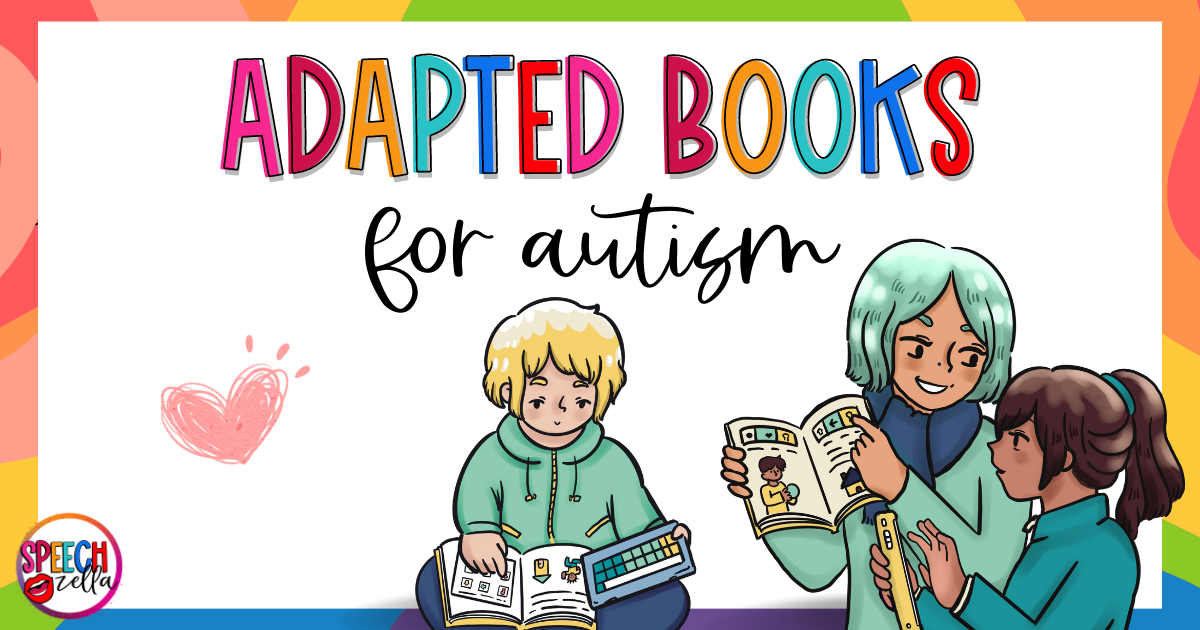
What are Adapted Books for Autism?
Overall, adapted books are modified reading materials that include visual supports. They could also be modified from traditional books. These adapted books could include interactive elements to keep your students engaged. Did you know you can target so many goals by using adapted books?
- Vocabulary
- Following directions
- Sequencing
- Social skills, etc.
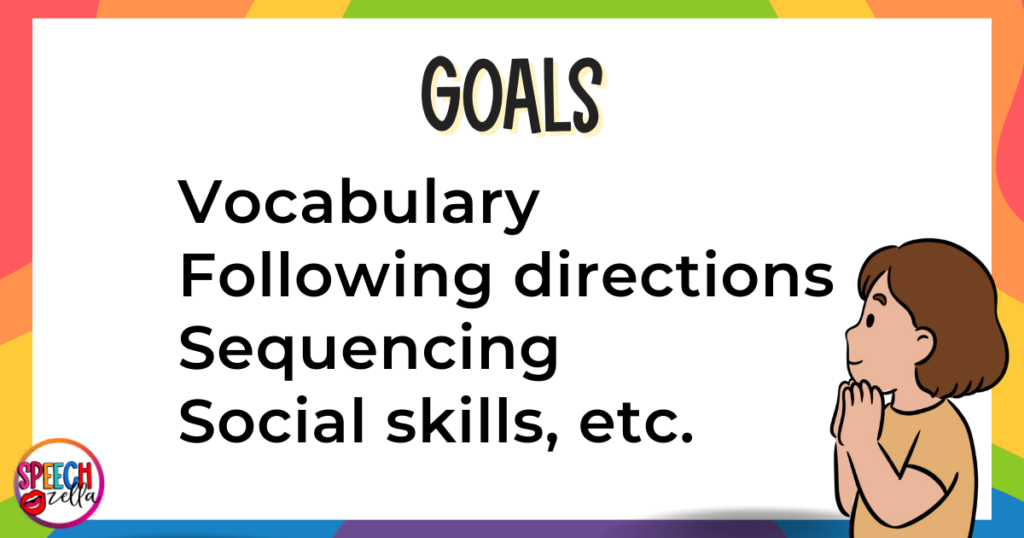
If you need to keep track of your students' goals, then check out this free Goal-Setting Punch card template. You can also check out the blog post Resources to Target Speech Therapy Goals and Objectives to help you track IEP goals.
How to Make Adapted Books in Canva – for free!
In Canva, it is easy to adjust the reading level so the text is simpler or more difficult to read. All you have to do is change the text by using “Magic Write.” … Ask “Magic Write to rephrase the text.
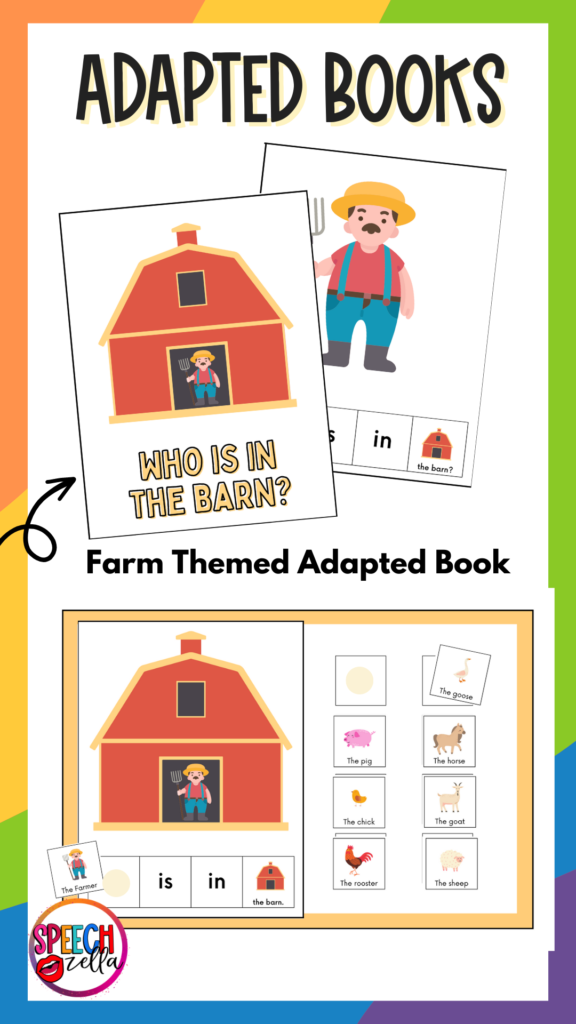
Then, from the Elements Tab, choose from a massive library of photos, images, and illustrations.
You can even use your student's photos. After all, a book that is unique and personalized is more engaging.
Print out the templates, cut where indicated, and then attach the pieces to the choice board with self-adhesive dots. And you're done!
Adaptive Books in Canva
With Canva, you have a digital download of these adapted books that are ready to use immediately.
But, more will definitely be added! Here are a few of the digital versions of my interactive adapted book collection available in Canva:
- Themed Adapted Books for Expressive Language Speech Therapy
- Fall Adapted Book Bundle
- Thanksgiving
- Christmas
- St. Patrick's Day
- Spring:
- Summer:
Elements of Adapted Books for Special Education
Basically, adapted books for autism make it easier for readers with support needs to understand what they are reading.
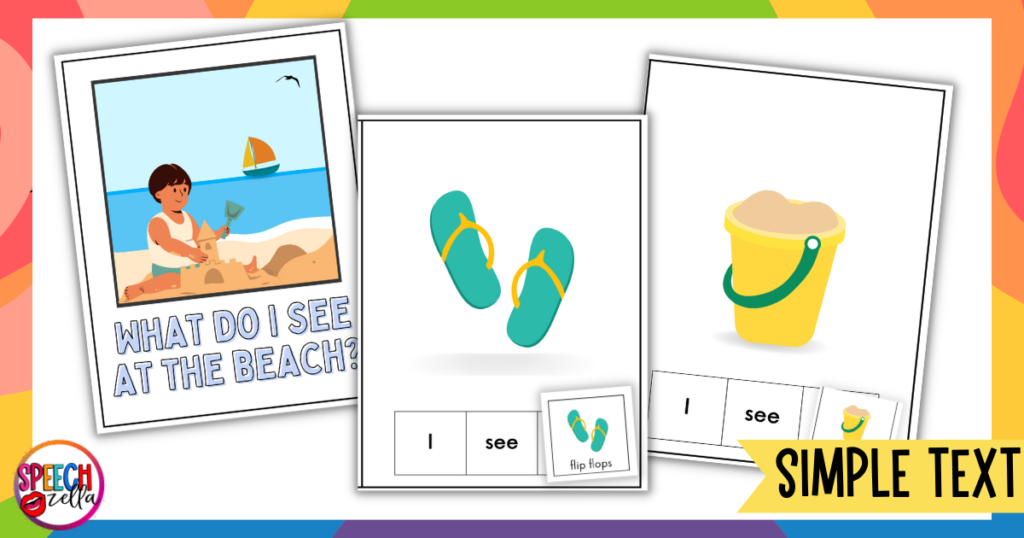
Visual Supports (e.g., photos, icons, symbols):
Visual supports help create connections between words and pictures for special education students
Creating Word-Picture Connections: Visuals like photos, icons, and symbols help students link words with images, making it easier to understand new vocabulary and concepts. This word-picture connection is especially valuable for students who rely on visual learning.
Simplifying Abstract Concepts: Moreover, visuals make abstract ideas concrete and understandable. For example, an icon of a happy face next to the word “happy” makes an emotion easier to grasp.
Interactive Elements (e.g., flaps, moveable pieces):
Interactive elements help to encourage participation and help them maintain attention for longer periods. In addition, interactive elements:
- can help stimulate a dysregulated child.
- develop fine motor skills, and
- help with turn-taking.
Additionally, they make reading more enjoyable! These adapted books can even be used in special education classrooms.
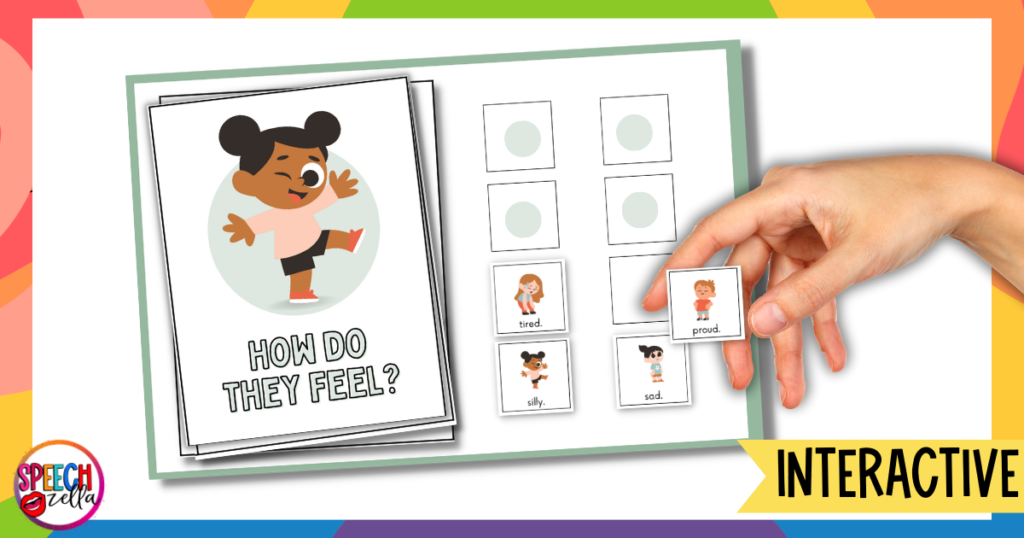
Sensory Adaptations
Sensory adaptations (e.g., using different textures, sounds, or tactile elements) make the therapy session more fun by engaging students' senses!
Supporting Sensory Needs: Some autistic students have sensory processing needs that sensory adaptations can address. For example, adding soft, rough, or fuzzy textures to adapted books can provide calming sensory input or stimulate curiosity, depending on the student’s needs.
Personalization
With Canva, it’s so easy to make these adapted books personal! You can change out all the names in the books to ones the student is familiar with.
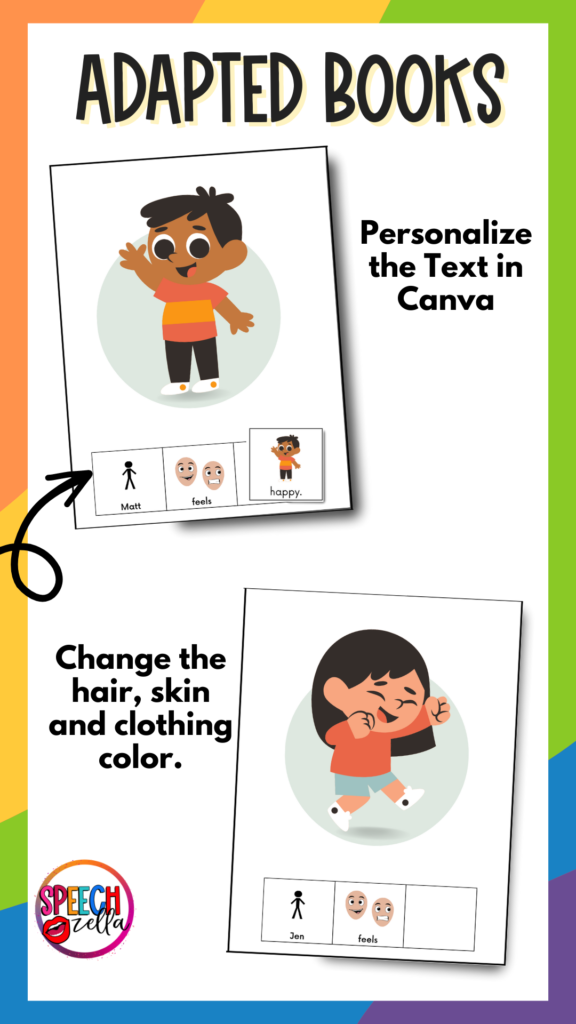
You can make reading materials to match the child's reading level.
Then, you'll decide what challenges are most appropriate for each kid.
You can even target reading comprehension and sentence structure goals with these books.
If your students have visual impairments, you can make the text larger and the images brighter.
With a free adapted book, you can target language development, academic skills, and literacy skills.
Why is Shared Reading Important?
This article, available on ASHA's website, discusses the importance of shared reading for children with communication difficulties.
According to this study, the authors found that Shared Interactive Book Reading (SIBR), can be really helpful for children's language skills.
Most of the studies they reviewed showed positive results, especially in how well the children could express themselves and understand what others were saying.
What are the benefits of adapted books?
Setting the pace:
The autistic child has full control over the pace and interaction with the book, empowering them to feel autonomous and take ownership of their reading experience. This leads to a deeper engagement and connection with the book, creating a positive and inclusive learning environment.

Repetitive:
Repetitive words can comfort autistic children, so try to adapt books with repetitive phrases.
This structured repetition can offer comfort and predictability to autistic students, helping them engage more fully with the story.
Repetitive language, such as predictable phrases or sentence patterns, can create a sense of familiarity with the content.
For autistic students, who may find comfort in routines and predictability, this repetition helps reduce anxiety and allows them to anticipate what comes next.
Changes in routine:
Similarly, students benefit from interactive books when going to a new school or changing routines.
Adapted books outline what to expect in new situations, reducing surprises and providing structure.
Adapted books outline what to expect in new situations, reducing surprises and providing structure.
Practicing Social Skills: These books can model responses to new interactions, supporting flexibility and social engagement.
Literacy:
Adapted books improve phonological awareness, sight word recognition, reading fluency, and literacy.
Boosting Confidence and Independence:
Adapted books encourage decision-making! If you want to boost the student's confidence and independence, then use adapted books. They can make meaningful connections that help with self-image! Plus, they will love to read and learn, especially when the story includes them.
Social Interaction
- Adapted books can help with social interaction and turn-taking during group settings.
- They can take turns reading and responding to questions.
- Plus, they can engage with their classmates while making conversations.
Comprehension
- The interactive features help provide more context during reading.
- They can also reinforce key information.
- Last, adapted books promote retention of the content.
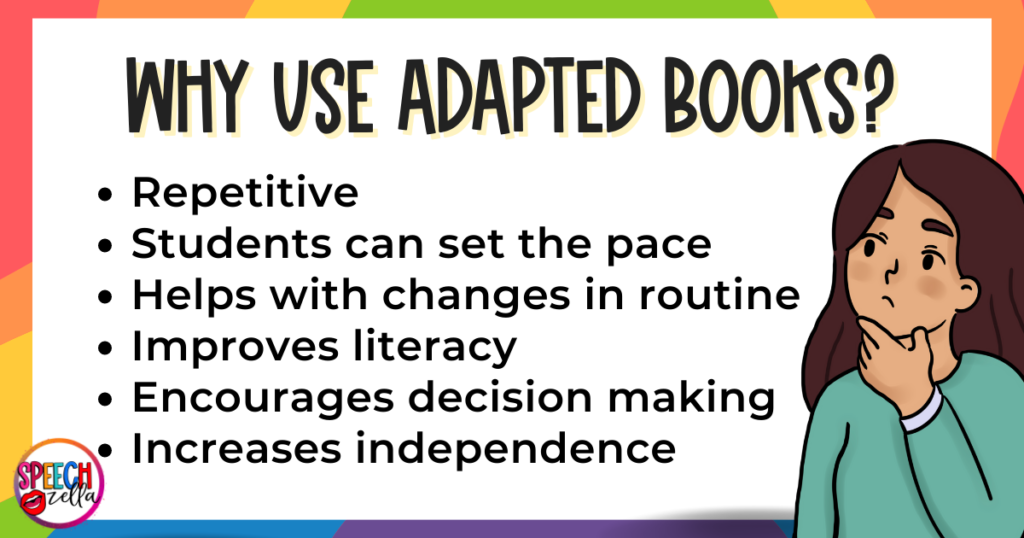
What does an adapted book mean?
There are various types of adapted books that you can use. Here are a few:
- Board Books: These durable books have easy-to-turn pages. This makes them especially perfect for young children.
- Picture Communication Book: These books are great for nonspeaking children who might need a way to communicate their basic needs.
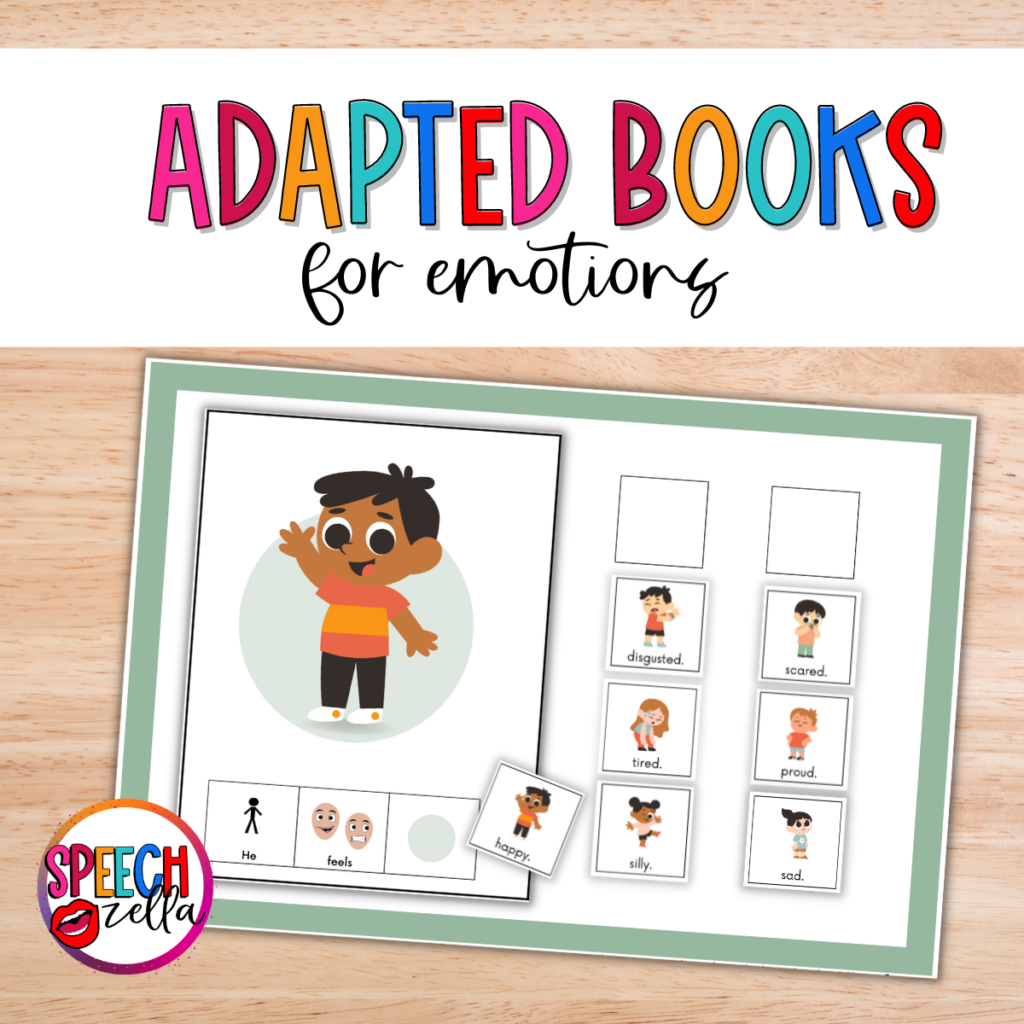
- Social storybooks: As you know, these books help autistic children understand and navigate social situations. These situations should be relatable and might actually happen to the student (e.g., being bullied, taking perspectives, etc.).
- Sensory books: These books have different textures, sounds, and objects to touch. Accordingly, as you read, you can tell your student to touch and explore the sensory elements.
Tips for Using Adapted Books for Autism
Essentially, here are tips when incorporating adapted books into your therapy sessions:
Firstly, choose an appropriate adapted book. You can find my free and editable adapted books here: Speechzella Canva Profile.
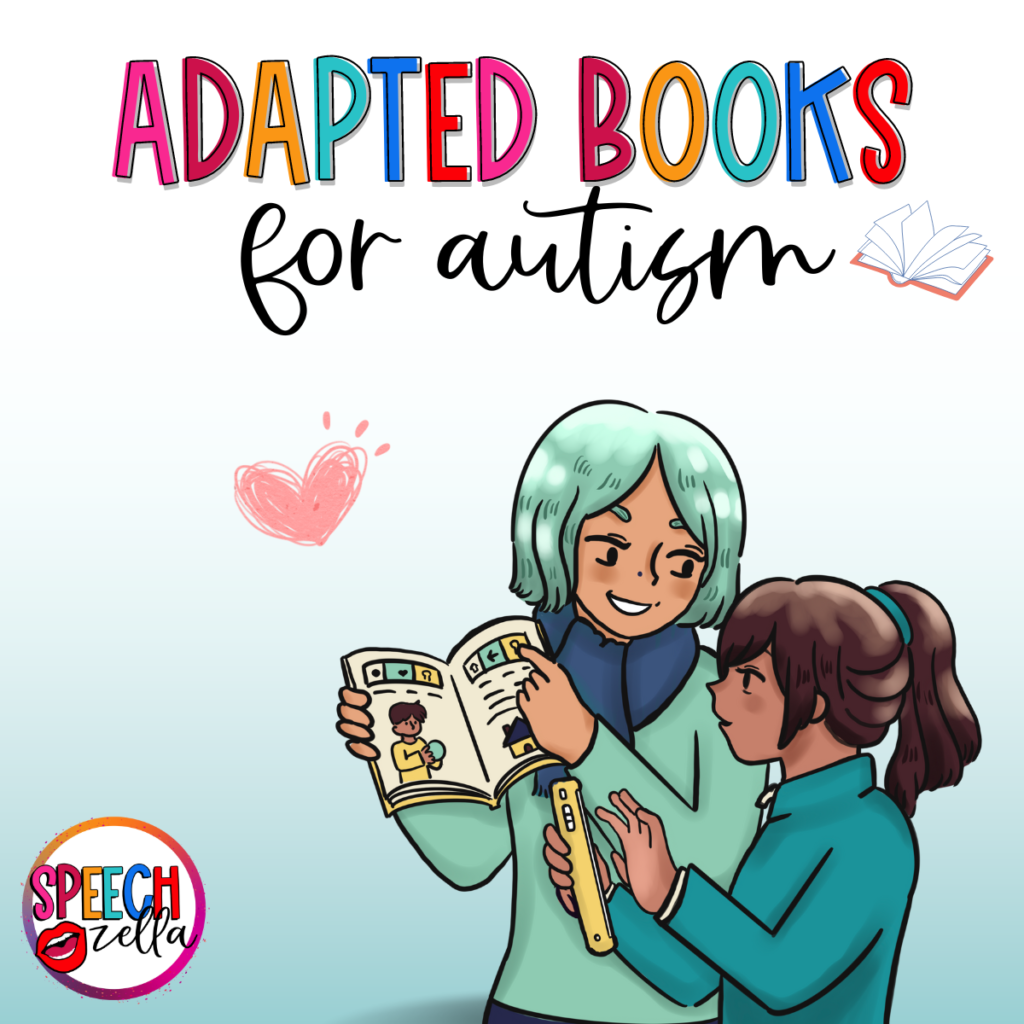
Adapted books must meet the following criteria:
- be interesting to the child. If the student likes soccer, then use soccer elements throughout the adapted books.
- be aligned with therapy goals.
- feature relevant vocabulary.
Additionally, use relatable picture symbols, icons, or photographs. The symbols must be clear for the student to understand.
Making Your Own Interactive Books
You can also create interactive books in Canva using these templates and switching out the pictures. Conversely, Canva has a huge resource library with clip art, photos, elements, and more for you to choose from. This is a great way to create your own books, especially if you want to
- target specific skills.
- ask your students simple wh questions
- target new skills or basic skills.
- use these books with advanced readers or different levels (even middle school students love these books!)
- include personal information.
- include favorite activities.
- target different learning styles.
- talk about everyday activities.
- work on vocabulary from social studies, a science unit, or other subjects.
- have fun lessons for your favorite themes!
- create activities for a different skill level.
Alternatives to Traditional Books
In essence, adapted books for autism are a great alternative to traditional books!
You can also create interactive books as an alternative to your favorite books. Try making alternatives to Goodnight Moon, The Very Hungry Caterpillar, or Brown Bear, Brown Bear, What Do You See?
The best part is you don't even need Board Maker or binding machine to make them! Do you have a favorite board book you want adapted? If so, leave me a comment below!
Last, I hope you enjoy these adaptive books for speech therapy! An adapted book is such a valuable resource when working with autistic students.
To learn more about Canva for Education, check out my other blog posts:
You'll also get tons of ideas and free resources available in Canva.
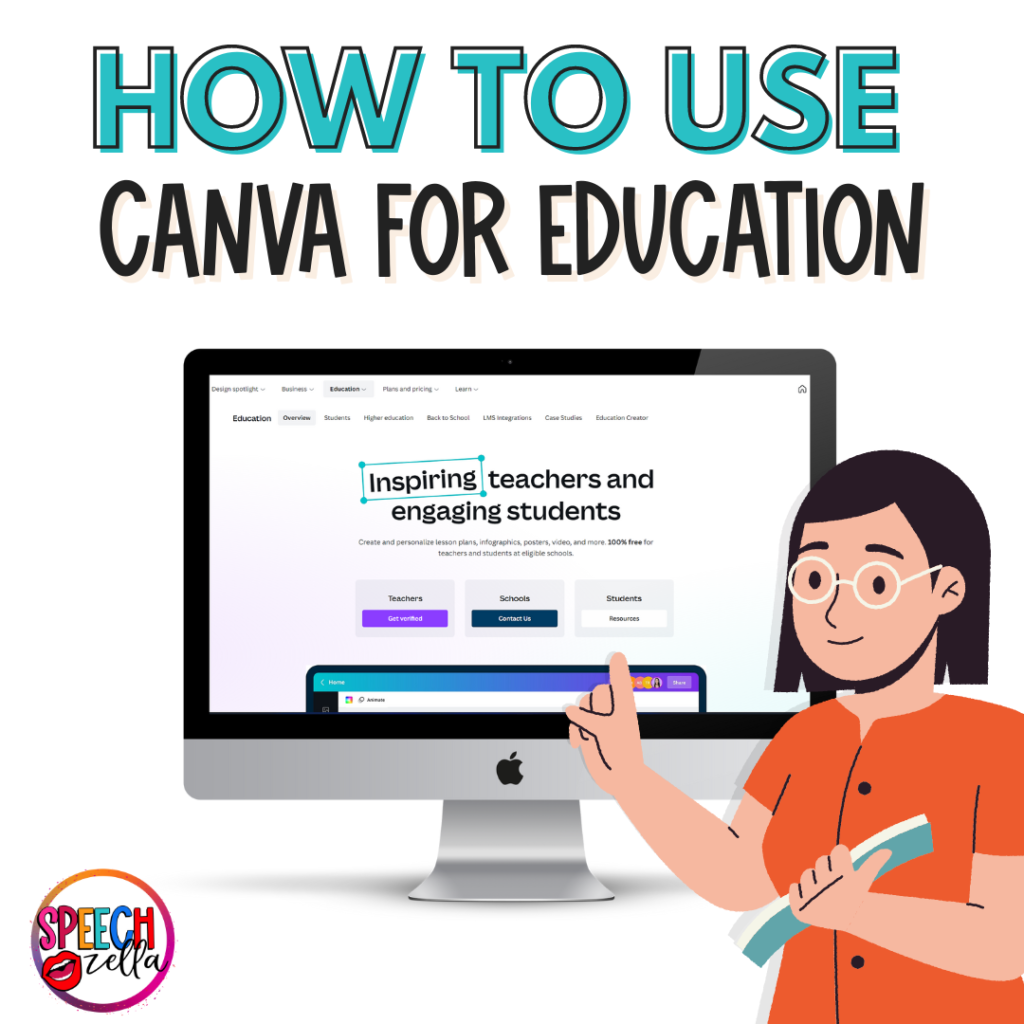
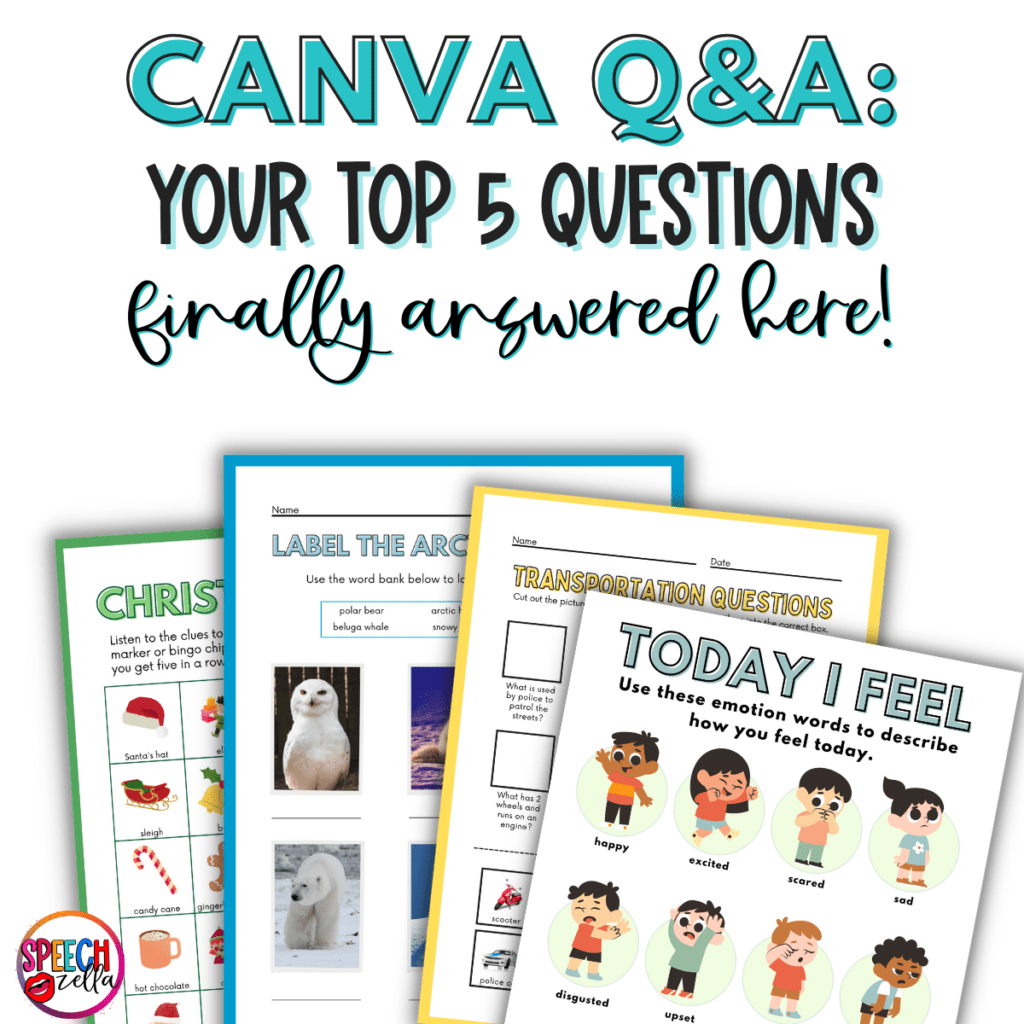
If you can't find the answer you're looking for, then leave a message below. Make sure you leave your email address so I can let you know when the resources are available.
Or, if you want to hear more about Canva for SLPs, then also let me know!
